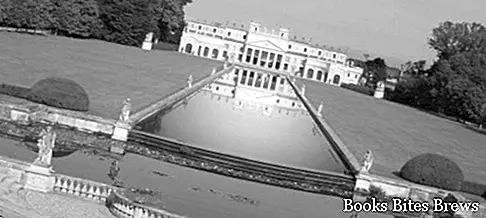What to see in Stra, itinerary including the main monuments and places of interest, including Villa Pisani and the Brenta Villas located nearby.
Tourist information
The name of the place originates from the Latin, strata, that is, paved road, in fact in Roman times its territory was crossed by the famous military road Emilia-Altinate, which connected Padua to Altino and Aquileia.
Today the town, which is part of the metropolitan city of Venice in Veneto, is made up of three inhabited centers of which Stra is the capital, the other two are San Pietro and Paluello, located on the banks of the Naviglio del Brenta, or Brenta Vecchia, a minor natural path of the Brenta river, which represents the river connection between the Venice lagoon and Padua.
Stra is part of the urban, historical and landscape complex between Stra and Fusina, known as the Riviera del Brenta, famous for the magnificent villas built by Venetian nobles at the time of the Republic of Venice, between the 16th and 18th centuries.
These wealthy Venetians reached their country villas sailing on the Brenta canal, by luxury boats called Burchielli.
Even today the boats ply the Brenta waters retracing the paths of these ancient boats, through the beautiful landscape and with the possibility of visiting the villas.
What see
In Stra there is one of the most beautiful villas of the Riviera del Brenta, Villa Pisani also called the National, built by the Pisans of Santo Stefano, a house of the Pisans, an ancient Venetian patrician family, designed by Girolamo Frigimelica.
The majestic villa houses works of art and furnishings from the eighteenth and nineteenth centuries, beautiful frescoed rooms, such as the ballroom with the ceiling frescoed by Giambattista Tiepolo.
Its wonderful park occupies an entire loop of the Brenta canal, with tree-lined avenues, rose gardens, greenhouses, water features, a large fishpond, an exedra belvedere, an orangery, a Coffee House and the famous maze, among the most famous in Europe, known as the Labyrinth of Love.
Villa Pisani was sold to Napoleon Bonaparte, who became king of Italy in 1805, who gave it to his stepson Eugene of Beauharnais, viceroy of Italy.
After Waterloo, when the villa became the property of the Habsburg imperial family, it was the favorite holiday resort of the Austrian empress Marianna Carolina, who hosted the main exponents of the European aristocracy of those times.
Recommended readings- Veneto: Sunday day trips
- Schio (Veneto): what to see
- Vigo di Cadore (Veneto): what to see
- Vittorio Veneto: what to see
- Agordo (Veneto): what to see
After the annexation of Veneto to the kingdom of Italy, Villa Pisani became state property and museum.
It was visited by various characters, including Wagner and D’Annunzio, who set a fundamental scene in his novel Il Fuoco.
In 1934 it was the site of the first official meeting between Mussolini and Hitler.
Pasolini shot an episode of his film Porcile in the rooms of the villa and in the park.
Near Villa Pisani is Villa Foscarini-Rossi, a splendid residence built by the noble Venetian Foscarini family at the end of the 16th century, to spend their holidays there.
Since 1995, the Villa has been home to the Museum of Footwear, by the will of the entrepreneur Luigino Rossi with the aim of witnessing the activity of the company he founded in this area, where the footwear tradition plays a fundamental role.




